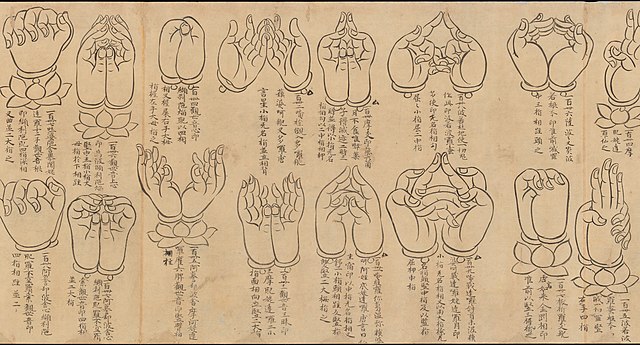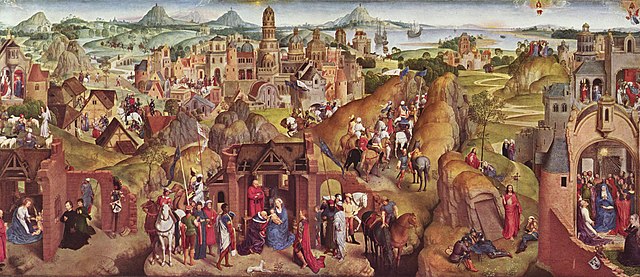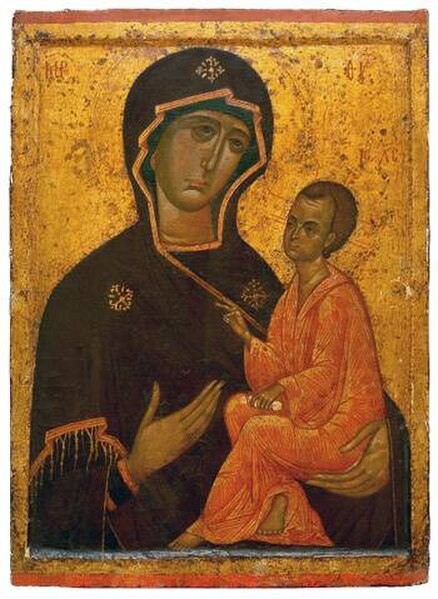A mudra is a symbolic or ritual gesture or pose in Hinduism, Jainism and Buddhism. While some mudras involve the entire body, most are performed with the hands and fingers.
A 10th century Chola dynasty bronze sculpture of the Hindu god Nataraja (Shiva) posing various mudras
12th-century Japanese scroll showing different mudra gestures
Korea's National Treasure 119. The right hand shows abhayamudra while the left is in the varadamudra.
The Buddha sitting in bhūmisparśa mudrā. Birmany. White marble with traces of polychromy. Gallo-Roman Museum of Lyon-Fourvière
Iconography, as a branch of art history, studies the identification, description and interpretation of the content of images: the subjects depicted, the particular compositions and details used to do so, and other elements that are distinct from artistic style. The word iconography comes from the Greek εἰκών ("image") and γράφειν.
Holbein's The Ambassadors (1533) is a complex work whose iconography remains the subject of debate.
A painting with complex iconography: Hans Memling's so-called Seven Joys of the Virgin – in fact this is a later title for a Life of the Virgin cycle on a single panel. Altogether 25 scenes, not all involving the Virgin, are depicted. 1480, Alte Pinakothek, Munich.
A 17th century Central Tibetan thanka of Guhyasamaja Akshobhyavajra.
The Theotokos of Tikhvin of c. 1300, an example of the Hodegetria type of Madonna and Child.








